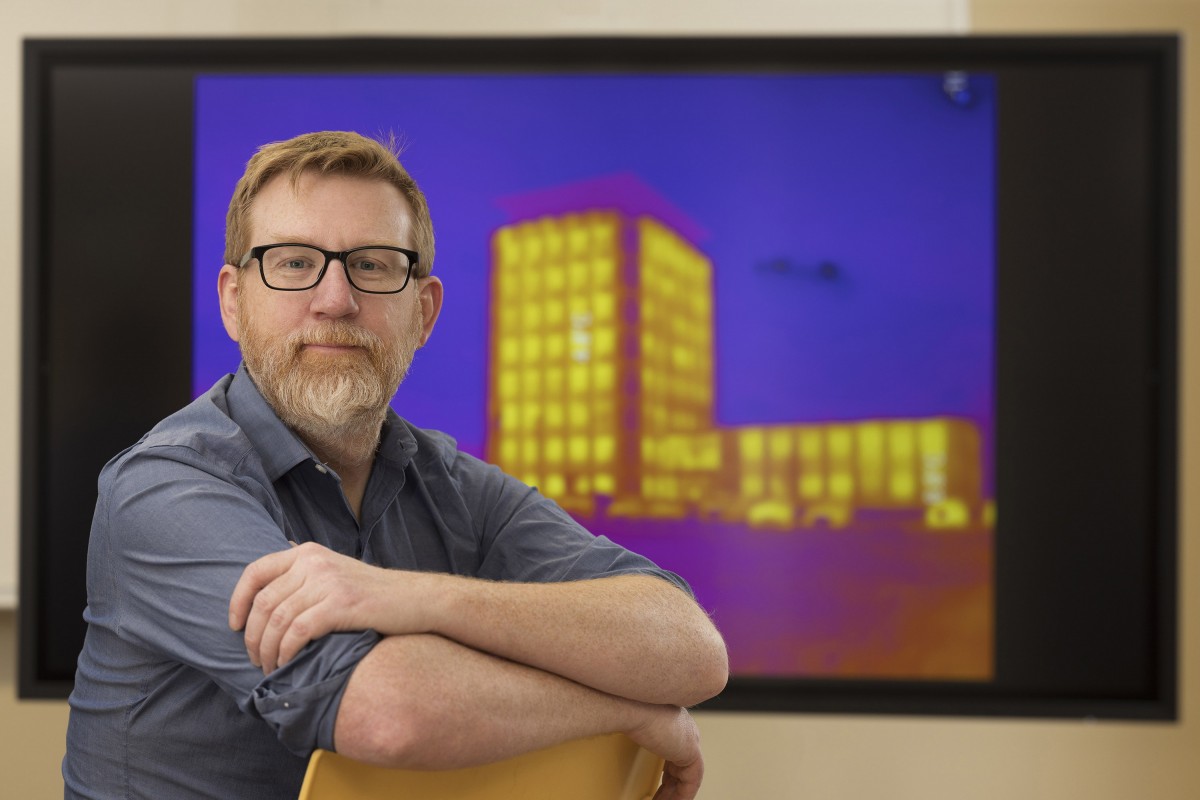Urban heat: Research may point the way to cooling steamy cities
Geography Professor Thomas Pingel receives a grant for his work pertaining to the urban heat island effect

Walk through a city on a hot summer day, and you can sometimes see the heat rise from the pavement, a shimmering distortion in the air.
Cities really are hotter than surrounding areas due to the urban heat island effect, first observed in London during the 1800s, explained Binghamton University Associate Professor of Geography Thomas Pingel. The buildings, parking lots and sidewalks absorb heat during the day, releasing it during the night.
This excess heat is more than just an annoyance; it can kill.
“With climate change, not only is the earth warming, but cities are warming at a faster rate than the earth is, so it becomes a particularly salient problem,” Pingel said. “Heat is the number one weather-related cause of death in the United States.”
Pingel, who joined the Binghamton faculty in the fall of 2023, recently received a PIX4Dcatch RTK desktop grant to aid his research into this effect and how to mitigate it through urban planning.
A specialist in geographic information systems (GIS) and remote sensing, Pingel has been working with lidar, drones and photogrammetric reconstruction for around 16 years, including Pix4D software, which allows users to take individual photos and turn them into three-dimensional images of the landscape. He has funding through the National Science Foundation to work on projects related to urban heat, most recently in Roanoke, Virginia.
In his current project, Pingel and his Near Earth Imaging Lab will create high-quality, 3-D thermal models of Broome County areas expected to undergo revitalization in the next decade. That will involve using drones, cameras and lidar platforms to map the area and features such as building facades, overlaid with temperature data.
The combination of mapping and thermal data will allow researchers to determine exactly how much a building’s façade heats up in the summer sun and how the placement of trees can cool the surrounding environment.
“You can build good information about how changes to the local environment improve the thermal properties of a place,” he said.
In addition to software, the grant provided the scanning equipment that Pingel and his lab use to build models from the ground up. Known as real-time kinematic GPS, it allows for accuracy within a few centimeters.
A digital twin
The early stages of the project will identify the best places for thermal mapping, which will need to be conducted during the summer. The mapping process is expected to continue over the next two to three years, culminating in the sharing of findings with the local community.
That process essentially creates a digital twin of the neighborhood, with every feature — including sidewalks, parking lots, individual trees and landscaping— included in rich detail. In thermal models, asphalt-filled parking lots glow brightly, demonstrating how quickly they heat up, while grass provides a cooling effect.
However, not all vegetation provides equal value when it comes to offsetting heat.
“The difference is stark,” Pingel explained. “The difference between pavement and grass is about the same as the difference between grass and trees. Trees provide an enormous benefit. Part of what this project does is map this so that people can see the heat effect with their own eyes.”
In addition to the impact on health, Pingel noted that urban heat is an equity issue; poorer communities often lack access to air conditioning and also have fewer trees and natural features than wealthier areas, creating a stifling environment.
His research may someday encourage urban planners to make choices that curtail the heat island effect, cooling cities down and reducing the possibility of heat-related death.
“This is a unique opportunity during a period of urban renewal,” Pingel said. “We can change the landscape over the next century.”
